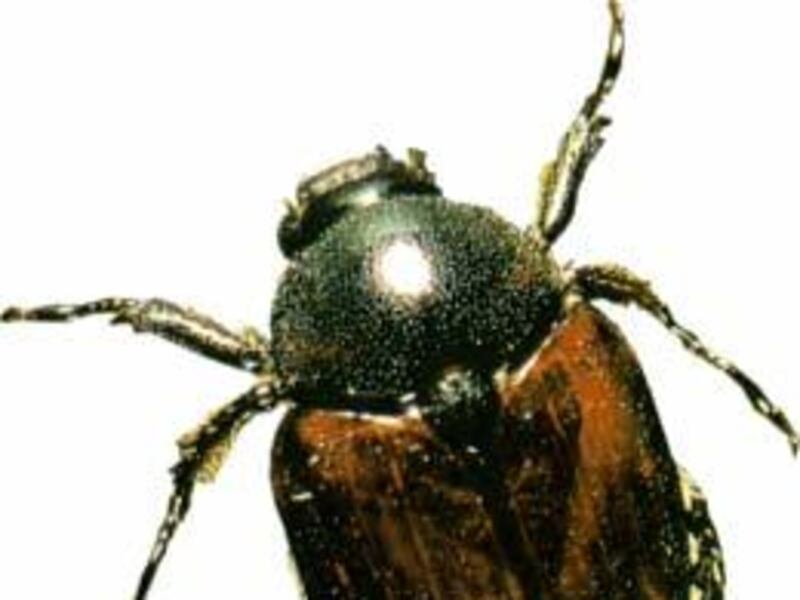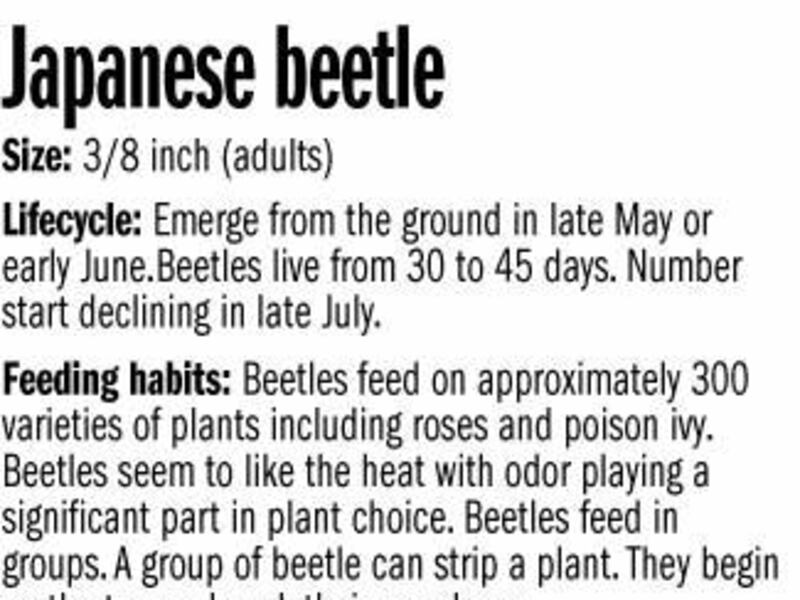OREM — The capture of more than 500 Japanese beetles in Orem marks Utah's first infestation of the pesky plant-eating insect — and has officials asking residents for help killing them.
After monitoring a 12-block grid in central Orem for more than a month, entomologists from the Utah Department of Agriculture and Food still don't know how or why a small, metallic-green bug from Japan ended up in Utah.
The beetles have munched their way from 400 South to 800 North and 1200 West to State Street.
"All you need is one (pregnant) beetle to start a population," said Clint Burfitt, a state entomologist. "We really have no idea how it got here."
Burfitt said they have found a few at the Salt Lake International Airport, but never a colony of this size. Perhaps a new family that recently moved to the area unknowingly brought the bug in an ornamental plant or outdoor shrubbery.
But while officials don't know how the beetle arrived, they do know how damaging the bugs can be if not handled quickly.
The quarter- to a half-inch long winged creatures live in lawns and shrubs, eating their way through leaves, flowers and crops.
It's now the mating season and pregnant females will soon lay their eggs in the soil. When the little larvae hatch, baby beetle grubs nibble at roots, damaging plants before the creatures surface in their beetle bodies.
The potential beetle outbreak could have serious economic ramifications, preventing Utah County agricultural businesses from exporting their goods.
Last year, according to state agricultural statistics, Utah County businesses made close to $130 million from farm- or crop-related sales, Burfitt said.
Federal law prohibits companies in Japanese beetle-infested areas from selling plants or crops to non-infested states unless the plants are treated, which can be expensive, Burfitt said. And although intra-state sales wouldn't be affected, out of state sales could be greatly affected, Burfitt said.
"This is a serious economic pest," Burfitt said. "If you value your yard at all, this thing is no good. It's an expensive little bug."
The Utah Department of Agriculture encourages Orem residents to take proactive steps to bump this beetle out of their yards, said Larry Lewis, public information officer for the Utah Department of Agriculture and Food.
Residents can visit the state's Web site for a list of approved pesticides at www.ag.utah.gov/pressrel/JBInfo.html.
Orem officials say they will take the necessary steps to deal with the plant predator and will work under the state's direction.
"They're going to need the cooperation of everyone involved," said Stephen Weber, division manager in Orem's public works department. "Because if one home is allowing (the beetle) to survive in that yard, we're back to where we started."
The Orem Community Hospital sits almost in the center of the affected grid and has hired a local exterminator to come spray for the pests, said Janet Frank, a spokeswoman for Intermountain Healthcare.
"We have seen (beetles) dead in the state's traps, but we haven't seen any evidence of their damage to our lawn or our trees yet," Frank said.
E-mail: sisraelsen@desnews.com


